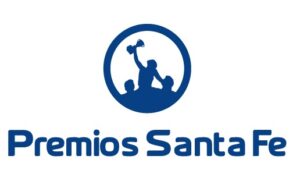Enter the amount of money distributed to each partner by the partnership. For purposes of line 6a, money includes marketable securities, as described in section 731(c). A partnership that is a partner in a tiered partnership must include as a liability on line 20 the partner’s share of the tiered partnership’s liabilities to the extent they are recourse liabilities to the partner.
Item K3. Payment Obligations Including Guarantees and Deficit Restoration Obligations (DROs)
This extra gain results in B and C’s recognition of a reporting partnership tax basis tax loss on the liquidation of the partnership (Sec. 731(a)(1)). Similarly, once a partner’s basis is zero, any additional allocation of losses is suspended until the partner has basis to offset the loss (Sec. 704(d)). For instance, if a partner receives a $10,000 cash distribution and their basis was $15,000 before the distribution, the new basis is $5,000. This reduced basis reflects the partner’s remaining stake in the partnership and will be further adjusted by future income allocations or distributions.
Line 10. Guaranteed Payments to Partners
Report in box 18 of Schedule K-1 each partner’s distributive share of amounts reported on lines 18a, 18b, and 18c of Schedule K (concerning items affecting partners’ bases) using codes A through C, respectively. Attach a statement to Schedule K-1 for the amounts included on line 18b that are exempt by reason of section 892, and describe the nature of the income. Attach a statement to Form 1065 and Schedule K-1 that shows other items not shown on lines 17a through 17e that are adjustments or tax preference items or that the partner needs to complete Form 6251 or Schedule I (Form 1041).
Tax-exempt investment in partnerships holding energy properties
The form does not need to be filed for distributions that consist of only money or marketable securities treated as money. The IRS released a new form that mandates the reporting of all distributions of property that a partner receives from a partnership. Draft Form 7217, Partners Report of Property Distributed by a Partnership, will be used for the 2024 tax year and beyond, and requires more detail than previously reported regarding the basis of distributed property.
Line 15f. Other Credits
- Of particular relevance to this discussion is the treatment of contributed property.
- If the partnership has made an election under section 6418 to transfer a portion of a general business credit determined under section 48 to an unrelated transferee, use code ZZ to report to the partners their shares of the retained section 48 credit.
- If the partnership is required to file Form 8990, it may determine it has excess taxable income.
- Although the partnership isn’t subject to income tax, the partners are liable for tax on their shares of the partnership income, whether or not distributed, and must include their shares on their tax returns.
- The parties agree that these Terms and all Order Forms shall be fairly interpreted in accordance with their terms without any strict construction in favor of or against either party and that ambiguities shall not be interpreted against the drafting party.
It increases with the partner’s share of income and decreases with losses and distributions. Once the partner’s beginning capital account has been reported on the tax basis, current year activity is required to be reflected on the tax basis in the partner’s capital account analysis. Generally, the partner’s capital account is increased for capital contributed during the year, including their current year income and other increases while the partner’s capital account is decreased for withdrawals or distributions during the year. Current year losses and other decreases are also taken into account. The partnership should also use Statement A to report each partner’s distributive share of QBI items, W-2 wages, UBIA of qualified property, qualified PTP items, and qualified REIT dividends reported to the partnership by another entity. The partnership must report each partner’s share of qualified items of income, gain, deduction, and loss from a PTP so that partners can determine their qualified PTP income.
What Is the Taxpayer Advocate Service?
Partners will have to separately determine whether they qualify for the 50% or 100% AGI limitation for these contributions. Don’t include the amounts reported on the attached statement using code G in the amount reported on Schedule K-1 for qualified conservation contributions using code C. Generally, amounts reported on line 4a as guaranteed payment for services and line 4b as guaranteed payment for the use of capital aren’t considered to be related to a passive activity.



















